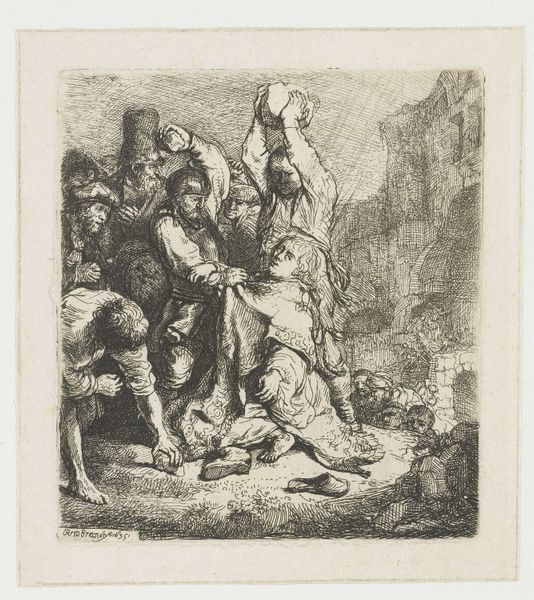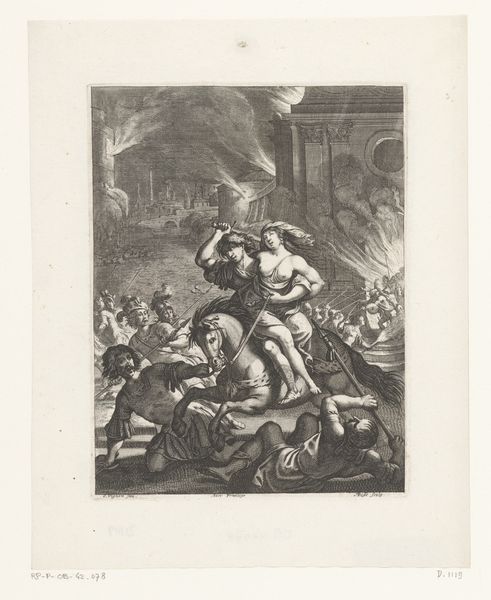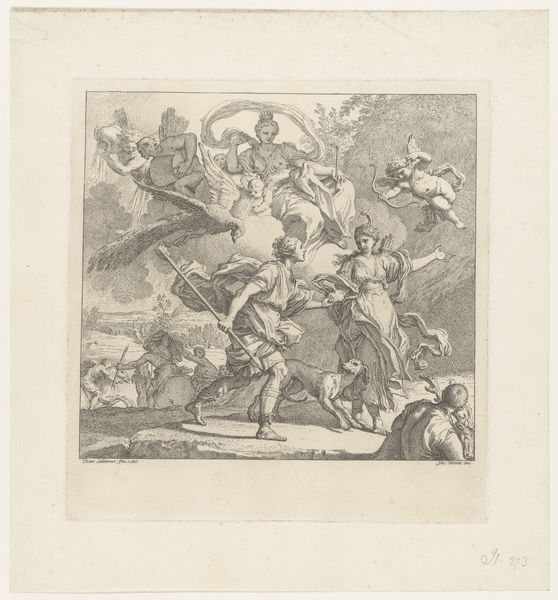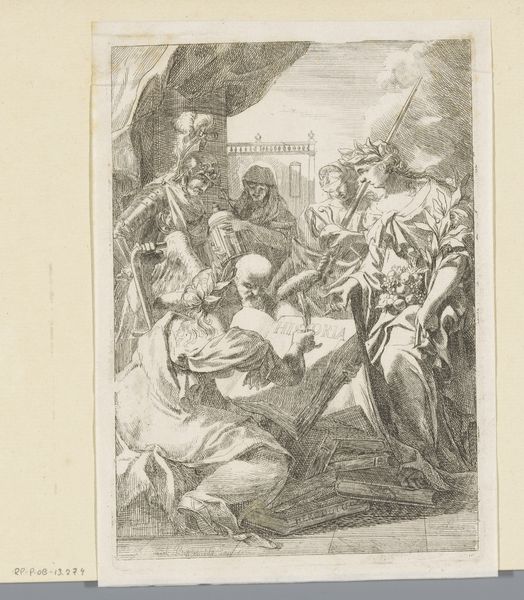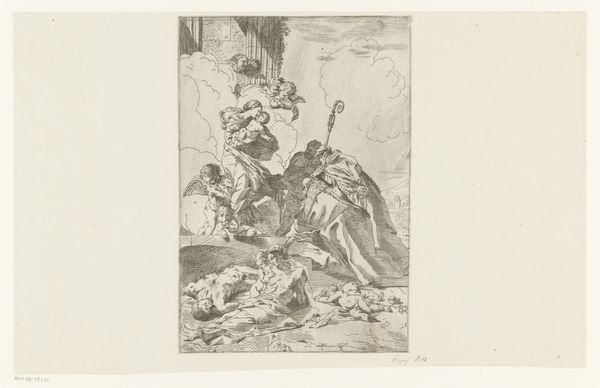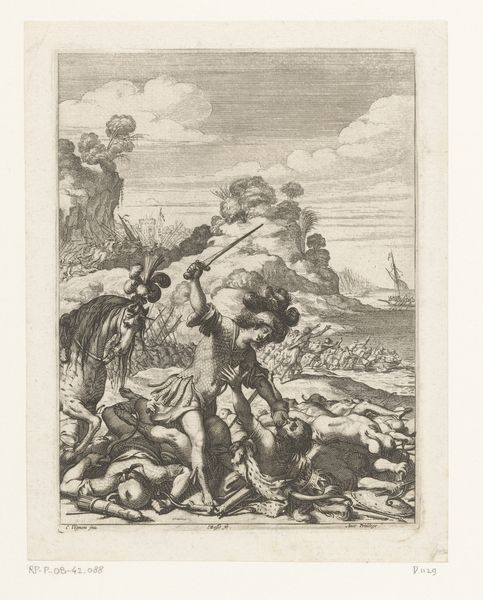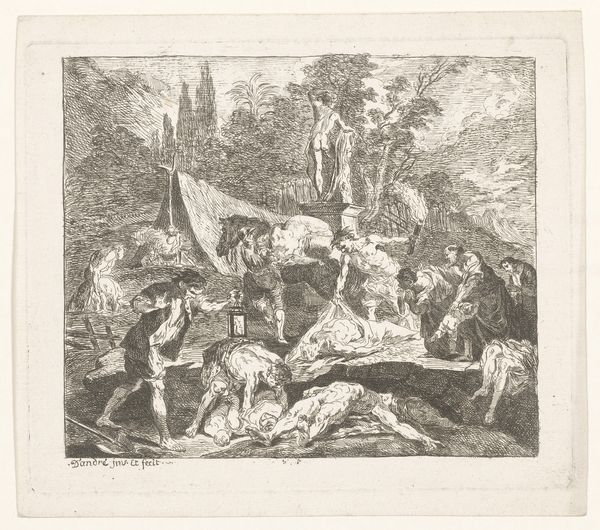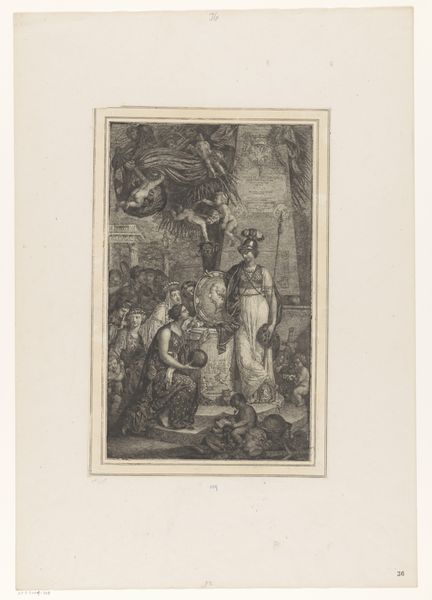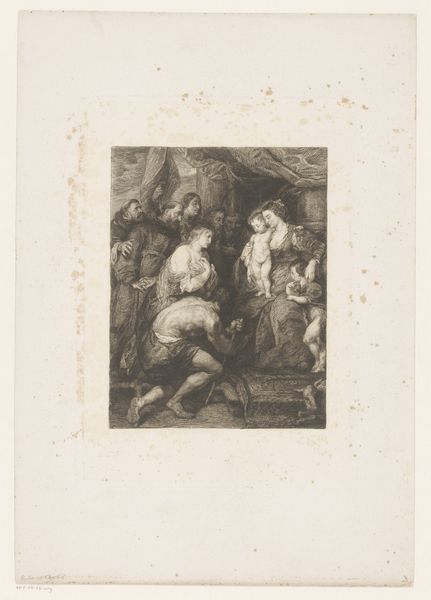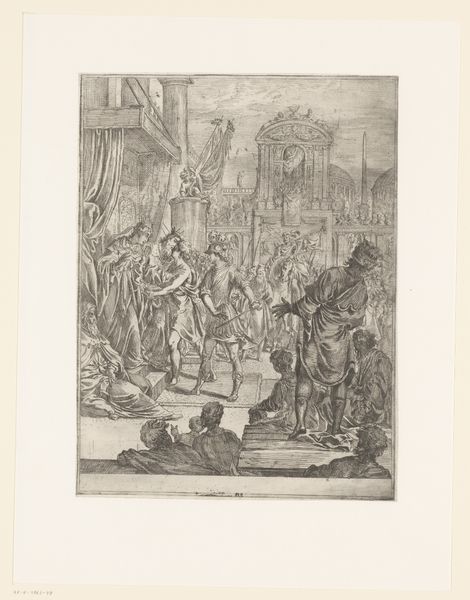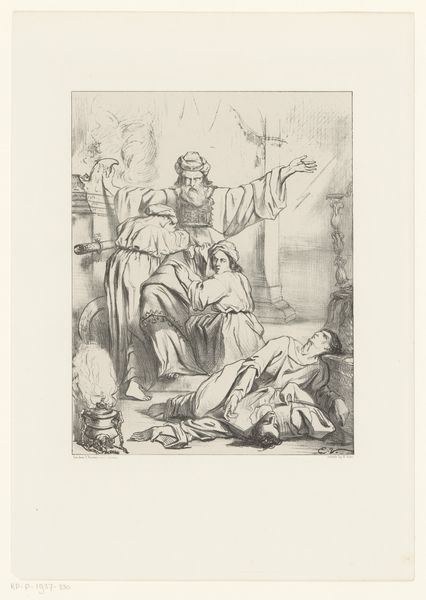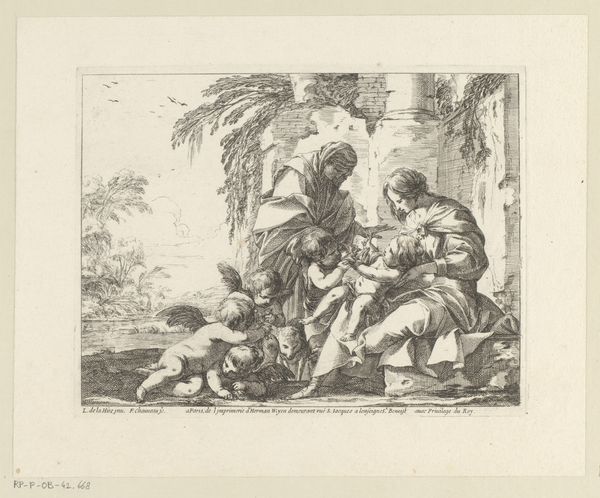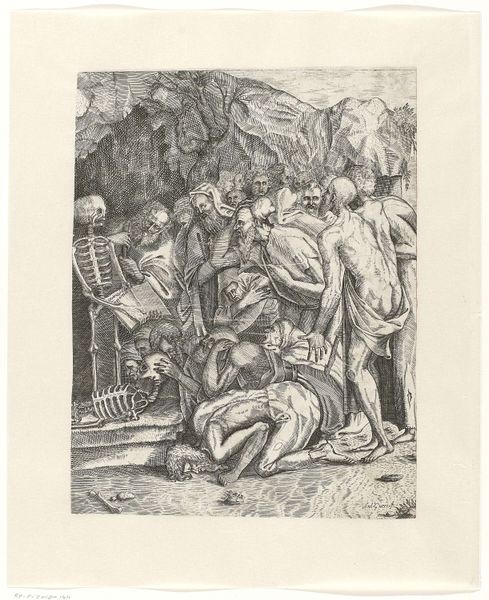
Dimensions: height 95 mm, width 85 mm
Copyright: Rijks Museum: Open Domain
Editor: We are looking at Rembrandt van Rijn's etching, "The Stoning of St. Stephen," created sometime between 1635 and 1906. The scene is chaotic and emotionally charged. What social or cultural factors do you think influenced Rembrandt's depiction of this biblical event? Curator: Well, it is important to realize how complex and politically charged depicting religious scenes actually was during this era. Remember, Rembrandt was working within a Protestant society, with a backdrop of the recently concluded Eighty Years’ War against Catholic Spain. The rejection of Catholic imagery certainly influenced his decision to represent such stories using etching and drawing rather than painting, given that public dissemination becomes more important with this choice. The visual composition and Rembrandt's decision to depict St. Stephen as a relatable, human figure speaks to that cultural context of religious reform. What do you notice about the people stoning St. Stephen? Editor: There’s a mob-like quality to them, yet there is also a wide variety of figures depicted with specific attires. Does this imply a representation of the socio-economic composition of Dutch society? Curator: Exactly! These figures represent a wide selection of Dutch society, reflecting societal tensions and anxieties present in the artist's time. It also subtly questions power structures. Who gets to participate in collective violence, and to what extent is this a state endorsed practice? Editor: So Rembrandt is using this biblical story to comment on contemporary Dutch society? The relationship between religion, the state, and collective behavior seems like it could also play an important role in how people understand this image then. Curator: Precisely. Moreover, by presenting it in an easily reproducible format, he’s able to directly challenge established hierarchies and norms of public art displays controlled by institutions. Think about the distribution of these prints and how they allow for discussion, critique, and even dissent against established authorities. Editor: I never considered the medium as part of the social commentary, thank you. Curator: My pleasure.
Comments
No comments
Be the first to comment and join the conversation on the ultimate creative platform.
